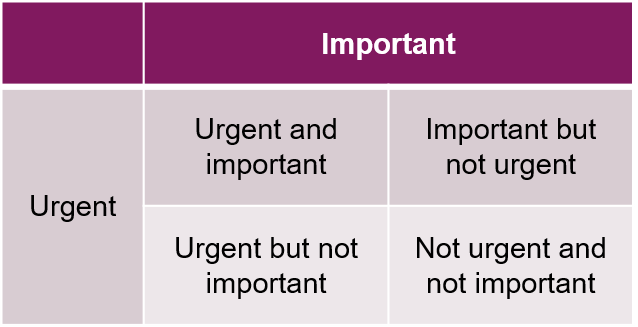-
United Kingdom
- Sign in
Updated: 19 October 2021
There’s never enough hours in the day, especially for small business owners. So, for the latest in our Take 10 series, we’re looking at 3 simple ways to help you stay on top of that never ending to do list.
Managing your time effectively helps you control of your day-to-day workload and keep a clear view of longer-time projects. In turn that can help you achieve your career goals more quickly and avoid stress.
Although a bit of stress is normal and can even be channelled into positive energy, being highly stressed over a longer period of time can be problematic. It can affect your sleep or even cause more serious illnesses, so controlling your workflow for a peaceful mindset is really important.
When we’re busy rushing around it’s easy to prioritise those quick, urgent items to simply tick them off your to do list. It’s always tempting to reply to an email as soon as it pops into your inbox.
However, it’s important to understand the time constraints of the task in hand and whether it will have a high impact. The below Importance vs Urgency matrix can help you prioritise competing tasks:

For example, depending on your role, emailing a supplier about a change in your team might be important but not time sensitive. Whereas organising a looming invoice payment might be urgent and important.
When looking through your inbox, try categorising tasks into the 4D’s: Delete, Delegate, Defer or Do.
If you’re managing a project and have a clear set of requirements, the MoSCoW matrix can help you rank tasks and deliver the most important items.
Must: Any items that must be achieved to complete a successful project
Should: The project success doesn’t rely on this item, but if possible within your time and resource constraints you should include
Could: Items you could have as long as they don’t impact on other items to ensure you deliver a successful overall project
Would: If you had unlimited time and resource you would include this item. It might be included in future edition, but won’t be delivered within the current project scope
We hope you found this post useful. In the next instalment of Take 10, we’ll be looking at how to motivate your direct reports.
The Funding Circle team

5779 REVIEWS